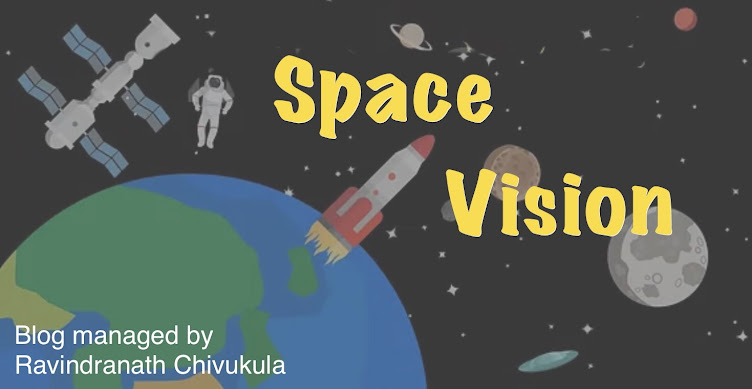October 6, 2012
 A pair of NASA space telescopes have captured a spectacular new photo of the Helix Nebula, a glowing celestial vision that resembles a giant cosmic eye.
A pair of NASA space telescopes have captured a spectacular new photo of the Helix Nebula, a glowing celestial vision that resembles a giant cosmic eye.
International Space Station deploys five cubesats
 The Physics of the First-Ever Supersonic Skydive
The Physics of the First-Ever Supersonic Skydive
A daredevil will skydive to Earth from 23 miles up on Oct. 8, achieving supersonic speeds during his freefall. Expert...
Read More »
Improved solid rocket booster to be tested next spring
Mind-Blowing Facts About Asteroids
Asteroids are small rocky objects orbiting the sun. They are too small to be called planets yet are sometimes called minor planets or planetoids. Many asteroids are located between Mars and Jupiter in the Asteroid Belt.
Scientists estimate the main belt alone contains more than 1 million asteroids. The total number in the solar system could be much higher if space rocks beyond Neptune’s orbit are considered. Scientists say collisions of space rocks with the Earth must have happened many times over its 4.5 billion year history, especially early on. If a large asteroid were found to be heading toward Earthtoday, scientists and engineers could possibly devise a plan to track and deflect it, expert say. Some interesting facts about asteroids: MORE HERE
Giant Eye In Space Seen By Telescopes
 A pair of NASA space telescopes have captured a spectacular new photo of the Helix Nebula, a glowing celestial vision that resembles a giant cosmic eye.
A pair of NASA space telescopes have captured a spectacular new photo of the Helix Nebula, a glowing celestial vision that resembles a giant cosmic eye.
The Helix Nebula (also known as NGC 7293) represents a dying star known as a planetary nebula. The new picture, released Wednesday (Oct. 3), combines data from NASA’s Spitzer Space Telescope, which observes in long-wavelength infrared light, and the Galaxy Evolution Explorer (GALEX), which picked out the short-wavelength ultraviolet light coming from the object.
The Helix Nebula is located about 650 light-years from Earth in the constellation of Aquarius. It provides a sneak peak at the future of our own sun, which is expected to turn into a planetary nebula in about 5 billion years.
Planetary nebulas are stars around the size of the sun that have neared the ends of their lives and run out of hydrogen and helium fuel for fusion in their cores. At this point, they puff out their outer gaseous layers into glowing shells around them, and condense into small white dwarf stars. MORE HERE
55 Years of Space Exploration : Video
October 4 marked the 55th anniversary of the Sputnik launch, which sent the first artificial satellite into orbit. It was actually a fairly small satellite, about the size of a basketball, but it had a big impact. It set in motion not only the space race, but jump-started a push for education and technology development. Thanks to the giant leap of Sputnik, we now use satellites for telecommunications, weather prediction, remote sensing, and navigation, not to mention the exploration of space.
This great video shows the notable events in the past 55 years of space exploration. It was put together by NU STARS, Northwestern University’s Space Technology and Rocketry Society
Read the rest of Video: 55 Years of Space Exploration Watch the Video
International Space Station deploys five cubesats
The Expedition 33 crew demonstrated the ability of the International Space Station to deploy satellites on 4 October. Several tiny satellites (Cubesats) were released outside the Kibo laboratory using the new Small Satellite Orbital Deployer attached to the Japanese module's robotic arm. Flight Engineer Aki Hoshide set up the satellite deployment gear inside the lab and placed it in Kibo's airlock. The Japanese robotic arm then grappled the deployment system and its satellites from the airlock for deployment.
Three Japanese-made and two U.S.-made satellites were sent out. Releasing satellites from the ISS results in less vibration than direct launches on rockets, helping to reduce design and production costs, according to JAXA.
The experiment involving Japan's Kibo lab used satellites provided by such entities as the Fukuoka Institute of Technology, Tohoku University and Wakayama University as well as San Jose State University.
After being released into orbit, the satellites will carry out various missions, including taking pictures of Earth and (in the case of FITSat-1) sending Morse code messages to the ground with high-power light-emitting diodes, for about 100 days, JAXA said.
A daredevil will skydive to Earth from 23 miles up on Oct. 8, achieving supersonic speeds during his freefall. Expert...
Read More »
NASA Aims to Trim Giant Deep-Space Rocket's Cost
Newly efficient assembly methods should lower the price tag of NASA's giant new rocket for deep space missions, agency officials say.
Engineers at ATK Space Systems in Utah are putting together the solid rocket boosters for NASA's Space Launch System (SLS) heavy-lifter, which is designed to blast astronauts toward near-Earth asteroids, Mars and other destinations beyond Earth orbit.
The new boosters are similar to the ones that helped loft NASA's now-retired space shuttles to orbit. But several new upgrades and improvements should allow the new boosters to be built more cheaply and efficiently, officials said. For information about NASA's Space Launch System
 |
The largest and most powerful solid rocket booster ever built for flight is being assembled for NASA's Space Launch System at ATK Space Systems in Brigham City, Utah, incorporating new cost-savings measures. The SLS will launch NASA's Orion spacecraft and other payloads beyond low Earth orbit, and provide an entirely new capability for human exploration.
Photo shows the forward segment of the qualification motor for NASA'S Space Launch System rocket being transported through manufacturing and assembly at ATK's facility in Promontory, Utah in preparation for a full-scale ground test there in the spring of 2013.
Although similar to the solid rocket boosters that helped power the space shuttle to orbit, the five-segment SLS boosters include several upgrades and improvements implemented by NASA and ATK engineers. In addition, the SLS boosters will be built more affordably and efficiently than shuttle boosters, incorporating new and innovative processes and technologies.
New process improvements have been implemented throughout the manufacturing of Qualification Motor-1, the next full-scale test article for SLS booster. Four case segments have now been cast, and the motor will begin assembly in the test stand next month in preparation for a ground test in the spring of 2013.
Implementing new handling processes, ATK estimates the total assembly time for the SLS booster can be reduced by approximately 46% overall. In one area, ATK optimised inspection methods and replaced x-ray inspections with an ultrasonic examination of the booster's nozzle, allowing technicians to evaluate the hardware on the production floor. In another, ATK reduced the number of moves from 47 to seven during one phase of booster assembly, reducing the chance of any damage in transit and greatly reducing the time it takes to complete that production process.
The booster team has successfully completed its Booster Requirements Review confirming the five-segment solid rocket motor had a well-understood set of requirements. The review, held at NASA's Marshall Space Flight Center, included independent consultants and determined the team is ready to proceed to a Preliminary Design Review in 2013.
The initial 70-metric-ton configuration of the SLS will provide 10% more thrust than the Saturn V rocket at lift-off. The rocket's first stage will be powered by four RS-25 former space shuttle main engines flanked by two five-segment solid rocket boosters. The SLS solid rocket boosters will generate a combined 32 MN (7.2 million lbf) of thrust to help power the massive rocket off the launch pad.
GSAT-10 satellite placed in geosynchronous orbit
The orbit raising manoeuvres of GSAT-10 satellite have been successfully completed from ISRO's Master Control Facility, Hassan.
The third and final orbit raising manoeuvre was performed on 3 October 2012 to place the GSAT-10 in an orbit with 35,734 km apogee (farthest point to Earth), 35,585 km perigee (nearest point to Earth) and an inclination of 0.172 degree with respect to the equator. Currently, the orbital period of GSAT-10 is 23 hours 50 minutes.
The two solar panels and the two dual gridded reflector antennas were also deployed later in the day. Currently, the satellite is in final orbital configuration at 70.18 degree East longitude. In the coming days, the satellite will be moved towards its designated location of 83 degree East and in-orbit testing of its communication and navigations payloads will be performed. Read More









